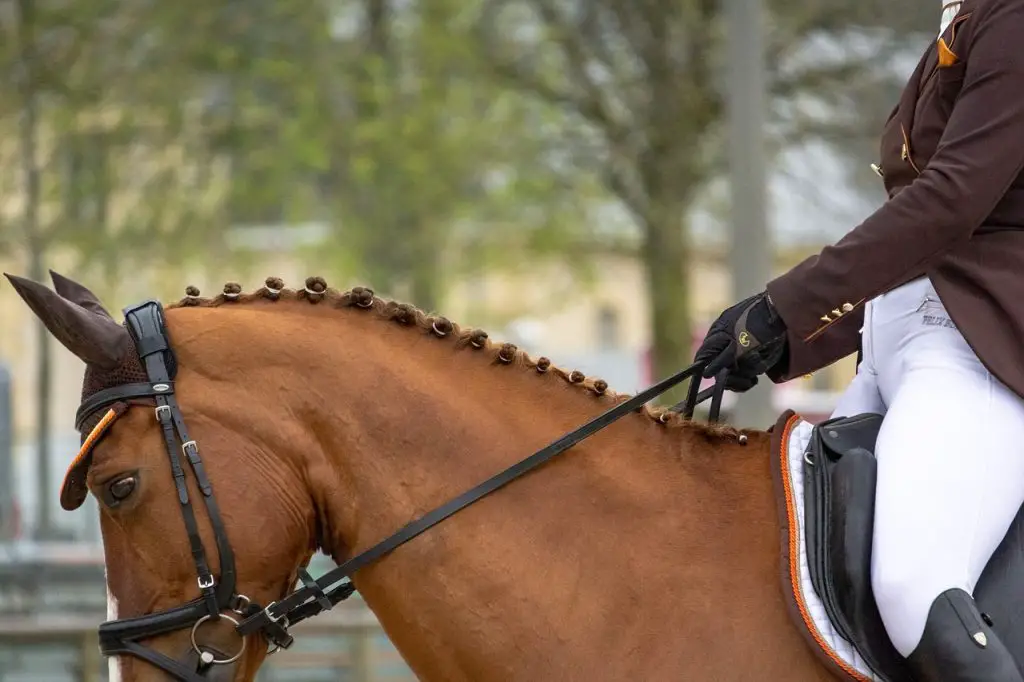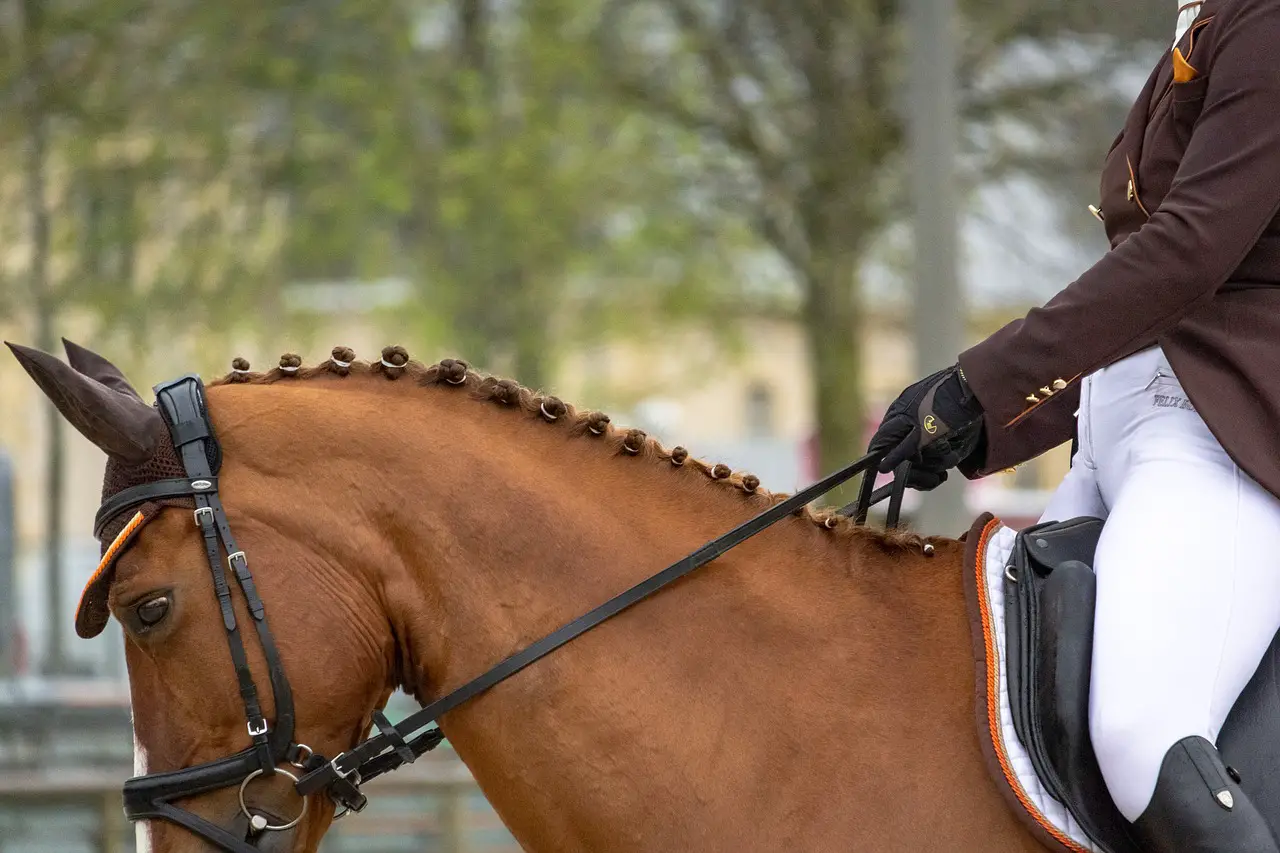Last Updated on March 24, 2022 by Allison Price
Rollkur was once a specter that had been extinguished from the dressage arena many years ago. Unfortunately, this is not the case.
Rollkur is still being used by international riders, although they tend to avoid the cameras.
What is Rollkur, and what’s the fuss about it?
What is Rollkur?
Rollkur, a controversial training method that was first imported from Europe many decades ago, is now out of fashion.
Rollkur is a technique that forces the horse to over-flexion. This causes the horse to be forced into a rigid outline and holds it there for prolonged periods.
Fortunately, this practice is not tolerated and was banned by FEI a few years back on grounds of horse welfare.
After a video showing an international team competitor using Rollkur to warm up for a Grand Prix class, the public pressure led to their decision. The horse’s tongue turned blue and the animal was clearly in distress.

Many horses resist being ridden in Rollkur, which is understandable.
Riders then try to force the horse to lower his head by placing their hands wide apart and low on the ground until the horse gives in to the pain of the bit pressing down on his lips and tongue.
After this pathetic form of “submission,” the rider will make the horse work for long periods in extreme Rollkur positions, sometimes without stopping.
What is the difference between Rollkur and “long and low”?
Rollkur is not to be confused with “long and low” horsemanship.
To encourage the horse to stretch, you can ride from the foot to the contact and ask him to work hard.
Asking the horse to work consistently and systematically in this manner results in suppleness and relaxation.
Rollkur, on the other hand, ignores the principles of classical dressage.
If the horse is performing correctly, his front should be slightly in front of the vertical lines.
Judges often see horses “behind-the vertical.” This is usually because they are trying to avoid a rider’s backward hands, but it could also be due to a horse’s inability to maintain balance or relative engagement with the bridle. The horse might briefly fall off the bit, either too low, or too high.
Working behind vertical should NOT be confused for Rollkur.
Rollkur: A welfare issue
Rollkur is often regarded as a welfare problem by dressage riders, much like blood in horses’ mouths or sides from excessive use of spurs.
Rollkur is very uncomfortable for horses.
All looseness and throughness have been lost due to compression of the vertebrae in Rollkur.
The horse’s topline appears stiff and lacks flexibility. True impulsion can’t be created and the horse won’t be engaged.
Rollkur’s contact is wrong. The horse is trying to evade the bit by ducking behind the bit, rather than trying to grab the bit and give the rider a soft elastic contact down the rein.
Rollkur is a stiff, over-bent, miserable horse who has a stiff back, trailing hocks and a stiff neck.
Final words
Dressage is about harmony between horse-rider, developing horse’s natural athletic abilities through correct, systematic training and patiently navigating the Scales of Training together.
Rollkur’s discomfort and false outline are contrary to all of these aspirations, training principles, and have no place in dressage arena or training environment.
What do you think about Rollkur? Are you satisfied with the FEI’s efforts to ban this method? Comment below.


